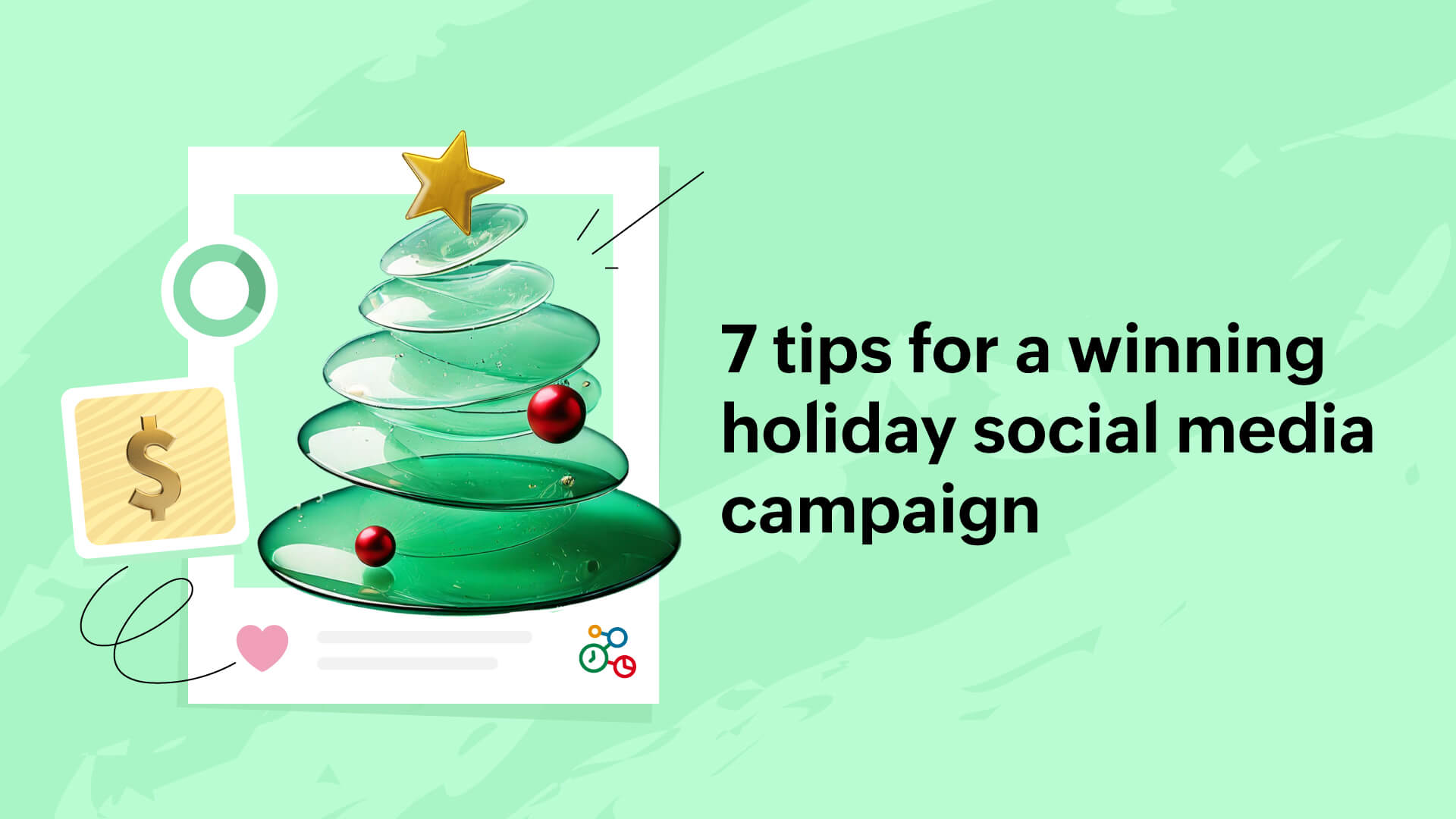A beginner’s guide to recycling social media content
- Last Updated : August 17, 2023
- 11.9K Views
- 7 Min Read

The social media content universe is not just ridiculously vast, but also constantly expanding. From strictly product-centric content, to educational and even infotainment, there are countless types of content, that businesses craft for their social channels. And producing good content takes time—so there’s always the quality vs quantity conundrum. How do you keep your social media feed packed if you’re not churning out final drafts at the speed of light, like the Flash?
Content itself stretches beyond the blogs, videos, and podcasts which you spend hours crafting. Anything on your social media feed is technically content. So a holistic look at your entire social media feed is first on the agenda when you’re about to get on the recycling mill.
And when I say recycling content, it’s not just reposting the same blog on your Facebook Page multiple times, till you’re flooding your feed and spamming followers. A single piece of content can be repurposed in multiple creative ways depending on the context. Let’s look at how social media content recycling works as a whole.
Section I – What is social media content recycling?
For the benefit of anyone who’s uninitiated, let’s quickly summarize content recycling. Content recycling broadly includes reposting, retweeting, or re-sharing any previously used content—be it in the same or different format, across your brand’s social channels. This leaves us with the question ‘what is recyclable content?’
Glad you asked.
Even a few seconds on a search engine searching recyclable will throw up ‘evergreen content’— a term you’ve probably seen floating around a lot on the internet. Any content that is consistently relevant and not dependent on factors like trends, classifies as evergreen. There are various types of evergreen content on the internet, like how-to guides or best practice tutorials which might need updating from time to time, but are generally relevant all through the year. For instance, our blog on ethical social media marketing is a classic example of evergreen content. It’s not time or demographic-sensitive. As long as businesses are on social media trying to market themselves, the article will stay relevant.
While evergreen content doesn’t generate traffic rapidly like topical content, it helps build your audience in the long run and brings recurring traffic. And this is what constitutes a big chunk of your recyclable content on social media, since it would be continuously relevant for your followers. But you can also recycle other types of content, depending on how creatively you can create a narrative for it.
Note: Even evergreen content can get outdated, so if you’re posting a lot of this type of content on social media, make sure you periodically update it!
Multi-format recycling
While the example above is about recycling blog-style content on social media, you can share the same content on social media in wildly different formats. Here are some ideas:
- Turning blog snippets into Twitter cards
- Turning posts/tweets into Infographics
- Turn a blog into a discussion or Instagram poll
- Post fun Infographics of your most popular tweets/posts
- Post older content with media like GIFs, videos, images
- Cross-post social media conversations from one network to another
You get the drift. Recycling existing social media content in any shape or form, to build your brand’s social presence comes under the umbrella of ‘Content recycling’. Whew. That was a lot to unpack. Now that’s out of the way, we can jump into why your business may need this.
Section II – Why should you recycle social media content?
Why do you have multiple social media channels for your business? Why does one make multiple personal investments? The answer is obvious isn’t it—you want to try every option that has the potential to benefit you in the longer run. That’s precisely why your business should consider recycling social media content. But if that’s not convincing enough, we’ll give you some concrete benefits you can get out of a content-recycling system:
a. Expanding brand reach – One of the primary reasons for trying anything on social media, is to expand brand reach. With more posts on your feed, you’re likely to get more people to notice your content. The more people that notice your content, the greater the likelihood of growing and nurturing a social media following. The math is obvious with this one.
b. Reaching people round the clock – If you’re a business that’s got a global reach with customers and potentials from around the world, then marketing to various timezones is an added factor in your overall social media strategy. By posting the same content across different time-slots, you can cater to different time zones and improve discoverability across the board.
c. Keep your feed active –You can probably relate to this one (I know I do!), but keeping your social media feed buzzing with activity can be hard to do consistently. The reasons are plenty—there can be hours or even days when there’s not much engagement going on. Maybe you’re backed up with other things and haven’t been able to publish a lot of content on social media for a while. This is the gap where a lull can set in and you can even stand to lose followers. Well, don’t allow it. Recycling older content helps keep your feed active and keep up with a demanding posting schedule, even while you’re busy doing other things.
d. Adding to the context – Say, you wrote a blog last year but it didn’t get a lot of traffic then—but now there seems to be a lot of buzz around the same topic. This is the perfect window of opportunity to re-position your old content. Just retouch it, update it, and put it on your content scheduler again! But remember, discovering a context to fit your pre-published content requires monitoring the social media space closely.
e. Hit the ground running on a new channel – It can be hard to create a new library of content for a new social channel that you’re starting brand activities on. But it helps, if you’ve existing content you’ve already been posting on another channel. When you branch out to a newer network, you don’t always have to create new content from scratch. Sometimes you can repurpose away! We know not all your content will fit the bill, but you can always re-use your evergreen content on a newer network.
This ensures you hit the ground running and not leave any Page/Profile inactive until you figure out a separate network-specific strategy for it. This can work based on two simple but strict criteria – reception with your existing audience and relevance to followers on the new channel.
Section III – How to recycle social media content
There are lots of ways you can recycle your social media content. In this blog, we will look at ways that aren’t network-specific, and are general reposting hacks that we recommend:
a. Maintain a Content Library – Even after you build a thriving social media presence and think it’s all under control, things can spiral out of control fast. It can get progressively harder to keep track of how much content you’ve posted and what you have in your repository. This is why it helps to have a content library.
Being organized and knowing what content you have simplifies the process a huge deal and helps in figuring out what content you can repurpose, and when.
b. Create new iterations of the same content – The same content can be presented in multiple ways on social media. And if you’re aware of how network algorithms work, you’ll know better than to duplicate exactly the same content. This is where creating new iterations—like multiple tweet copies or multiple versions of a Facebook post—comes in handy. Not only does this help you get the same content out for more social media exposure, it also ensures that you don’t accidentally spam.
c. Use seasonality to share widely – Some of your content won’t be relevant all year round, but may be seasonally relevant. For instance, if you posted a helpful infographic or blog piece about how to run a holiday season campaign, you can easily repurpose it the next year when the holiday season comes along. Just remember to make any necessary updates to the content!
d. Marking milestones and using #throwback campaigns – Has any of your content gone viral? Gotten 1k likes? 10k views? Mark those achievements by re-sharing them. Not only can you repurpose the content this way, but also call attention to your content milestones along the way. Similarly, you can also use recall campaigns like the #throwback campaigns, to revisit content that you may have posted exactly a year ago, for instance. The specifics are up to your brand’s marketing outlook—all we’re saying is that it works!
e. Repost user-generated content – You can repost interesting, user-generated content not only on the same channel but also across channels—be it re-tweeting a fun Tweet or poll with your followers, or even posting the snapshot of an interesting Facebook poll as an Instagram Story. Just as long as it fits well in your current social media feed. Not only does it help spread your content widely, but it helps score some engagement points.
And while you’re at it, you can make this reposting business much simpler by using a social media tool that can help schedule your content in bulk, all in advance. Maybe give it a spin and see how it goes?
 Amruthavarshinii
AmruthavarshiniiChats & writes about anything from social media, culture, to how chai latte isn't a real thing.












